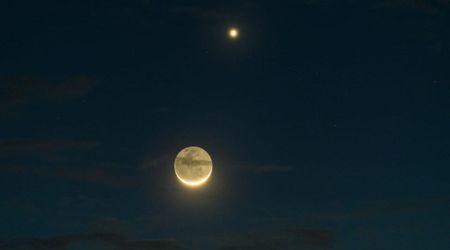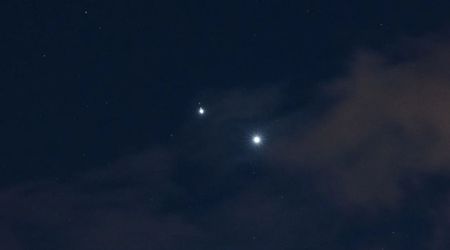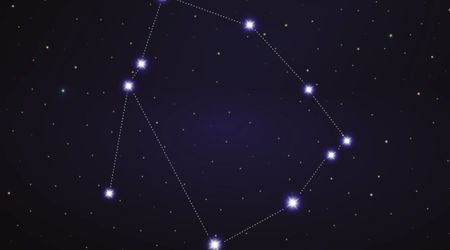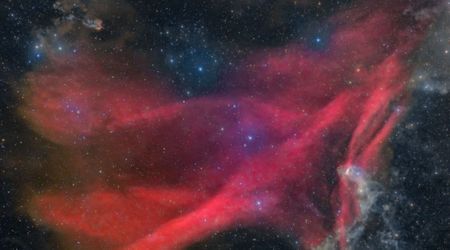Brilliant photo captures Milky Way arch over Kitt Peak National Observatory

On a balmy June night, residents of Arizona were treated to a spectacular celestial display. The sky ignited with vibrant hues emanating from the vast clouds of gas and dust that are the building blocks of our very own home galaxy, the Milky Way, as reported on Space.com.
Our home galaxy, the Milky Way, appears like a halo of light arching over the MDM Observatory’s Hiltner 2.4-meter Telescope at @KittPeakNatObs, a Program of @NSF’s @NOIRLabastro in this #imageoftheweek.
— Kitt Peak National Observatory (@KittPeakNatObs) January 25, 2024
📷: KPNO/NOIRLab/NSF/AURA/T. Slovinský
https://t.co/sWzGUTcZSJ pic.twitter.com/9SbRU2qboC
Our Milky Way galaxy is an immense structure, spanning approximately 100,000 light years across, and is home to our solar system along with countless other celestial bodies. Our solar system undertakes an incredible journey, orbiting the galactic center and completing a single revolution roughly every 250 million years. The galaxy derives its name, "the Milky Way, " from its characteristic milky white appearance in the night sky, a phenomenon that Greek mythology attributes to the goddess Hera.
Curves vs. corners 📐
— NOIRLab (@NOIRLabAstro) June 11, 2025
The Milky Way meets the geometry of the McMath-Pierce Solar Telescope at @KittPeakNatObs.
It was once the largest solar telescope. Now it’s being reborn as the Windows on the Universe Center opening to the public in 2025.
📷KPNO/NOIRLab/NSF/AURA/P. Horálek pic.twitter.com/tF49byJ4bF
The breathtaking celestial display witnessed by Arizonans was captured at the Kitt Peak National Observatory, situated near Tucson. This observatory, a program of the National Science Foundation's NOIRLab, is home to the recently retired McMath-Pierce Solar Telescope. This impressive instrument was named in honor of astronomers Robert McMath and Keith Pierce. For many decades, the McMath-Pierce telescope held the title of the world's largest solar telescope. It stood a remarkable 110 feet (33 meters) tall, featuring a platform with a diameter of 26 feet (8 m). The telescope functioned by reflecting light from a mirror down a 200-foot-long (61 m) concrete optical tunnel. After decades of invaluable service to the scientific community, the telescope was decommissioned in 2017. According to NOIRLab, it is now being transitioned into the NOIRLab Windows on the Universe Center for Astronomy Outreach.
Did you know astronauts like Neil Armstrong & Buzz Aldrin used the McMath-Pierce Solar Telescope at NSF @KittPeakNatObs to train for their lunar landing? 🌝🚀 Introducing NSF @NOIRLabAstro's Behind the Science series: an insider’s look at life at our observatories. pic.twitter.com/LDu0TzaW4N
— NOIRLab (@NOIRLabAstro) June 11, 2025
While the Kitt Peak National Observatory provided the vantage point for capturing the breathtaking image of our galaxy, the ideal conditions for seeing the Milky Way are a rare occurrence. As summer approaches the Northern Hemisphere, stargazers have an excellent opportunity to spot the Milky Way with its band appearing low on the eastern and western horizons, free from the interference of cosmic dust. This cosmic dust, comprised of remnants from various interstellar events such as supernova explosions, star mergers, or solar storm releases, typically bunches up to obscure light from more distant galaxies. Its presence away from the Milky Way band allows for clearer observation of the galaxy's bright star clusters and dark nebulae.

However, experiencing this beautiful sight demands specific conditions: a narrow window of time and the absence of pollutants. The Milky Way remains largely a myth for residents of cities where light, air, and even sound pollution obscure the night sky. Our solar system resides within the flat disk of the Milky Way, situated between its central spiral, appearing as a narrow, diffuse band of starlight when viewed from our perspective. Conversely, a slight shift in our line of sight can reveal the vast, empty expanse of intergalactic space, defining the galaxy's true borders.

It is precisely this density of interstellar activity within the galaxy, with its abundant star clusters, nebulae, and a mix of new and old stars displaying diverse features, that makes people repeatedly seek out its beauty. The visibility of the Milky Way's magnificent band serves as a powerful reminder of the ongoing need to combat the escalating risks of light pollution, ensuring that future generations can also witness the wonders of our galaxy.









